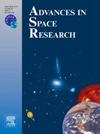A rainfall prediction model based on ERA5 and Elman neural network
IF 2.8
3区 地球科学
Q2 ASTRONOMY & ASTROPHYSICS
引用次数: 0
Abstract
The heightened frequency and intensity of heavy rainfall, brought about by global climate warming, significantly affect various regions. Rainfall prediction plays a pivotal role in ensuring societal security and fostering development. There has been limited exploration of the impact of input parameters on the accuracy of rainfall predictions. Despite the advantages of Elman neural network models in handling non-linear relationships and spatiotemporal data, their application in weather forecasting is restricted. This paper assesses the accuracy of the European Centre for Medium-Range Weather Forecasts Reanalysis v5 (ERA5) with a dataset from meteorological stations. It introduces a novel rainfall forecasting model based on the Elman neural network and ERA5 reanalysis data. The study also identifies optimal input parameters through factor correlation analysis. Experimental results showcase the precision and stability of ERA5 across various rainfall conditions. Meteorological parameters, such as Precipitable Water Vapor (PWV), exhibit noticeable correlations with temporal variables and precipitation volume. The seven-factor model, including PWV, Zenith Tropospheric Delay, temperature, relative humidity, day-of-year, and hour of day, outperforms in precision evaluation. It achieves a mean critical success index of 57.06 %, a correct forecast rate of 91.39 %, and a false alarm rate of 39.48 %. This rainfall forecasting model introduces a novel approach and empirical research to enhance predictive accuracy, holding significant implications for the amelioration of meteorological alert systems, risk mitigation, and the safeguarding of life and property.
求助全文
约1分钟内获得全文
求助全文
来源期刊

Advances in Space Research
地学天文-地球科学综合
CiteScore
5.20
自引率
11.50%
发文量
800
审稿时长
5.8 months
期刊介绍:
The COSPAR publication Advances in Space Research (ASR) is an open journal covering all areas of space research including: space studies of the Earth''s surface, meteorology, climate, the Earth-Moon system, planets and small bodies of the solar system, upper atmospheres, ionospheres and magnetospheres of the Earth and planets including reference atmospheres, space plasmas in the solar system, astrophysics from space, materials sciences in space, fundamental physics in space, space debris, space weather, Earth observations of space phenomena, etc.
NB: Please note that manuscripts related to life sciences as related to space are no more accepted for submission to Advances in Space Research. Such manuscripts should now be submitted to the new COSPAR Journal Life Sciences in Space Research (LSSR).
All submissions are reviewed by two scientists in the field. COSPAR is an interdisciplinary scientific organization concerned with the progress of space research on an international scale. Operating under the rules of ICSU, COSPAR ignores political considerations and considers all questions solely from the scientific viewpoint.
 求助内容:
求助内容: 应助结果提醒方式:
应助结果提醒方式:


